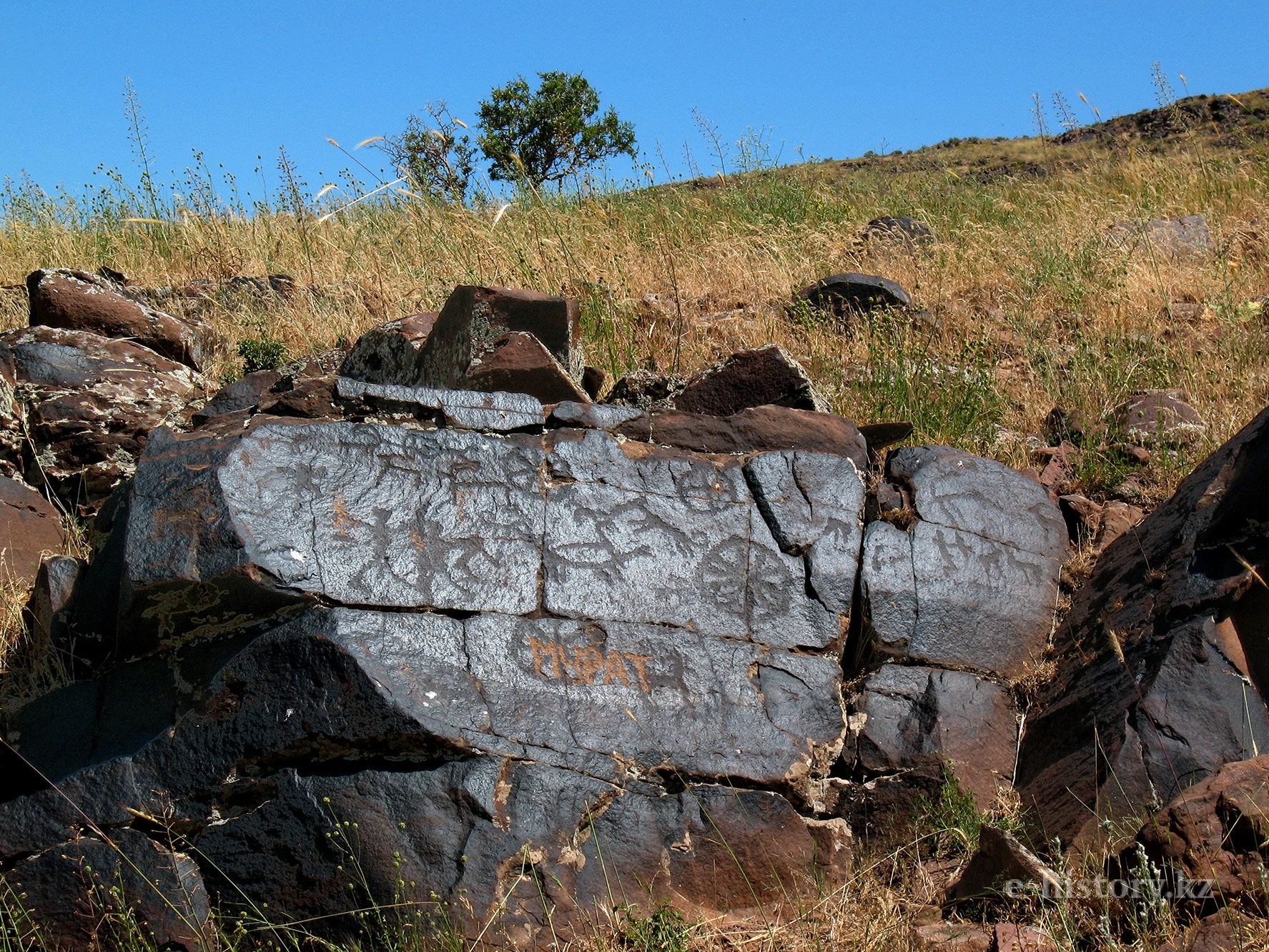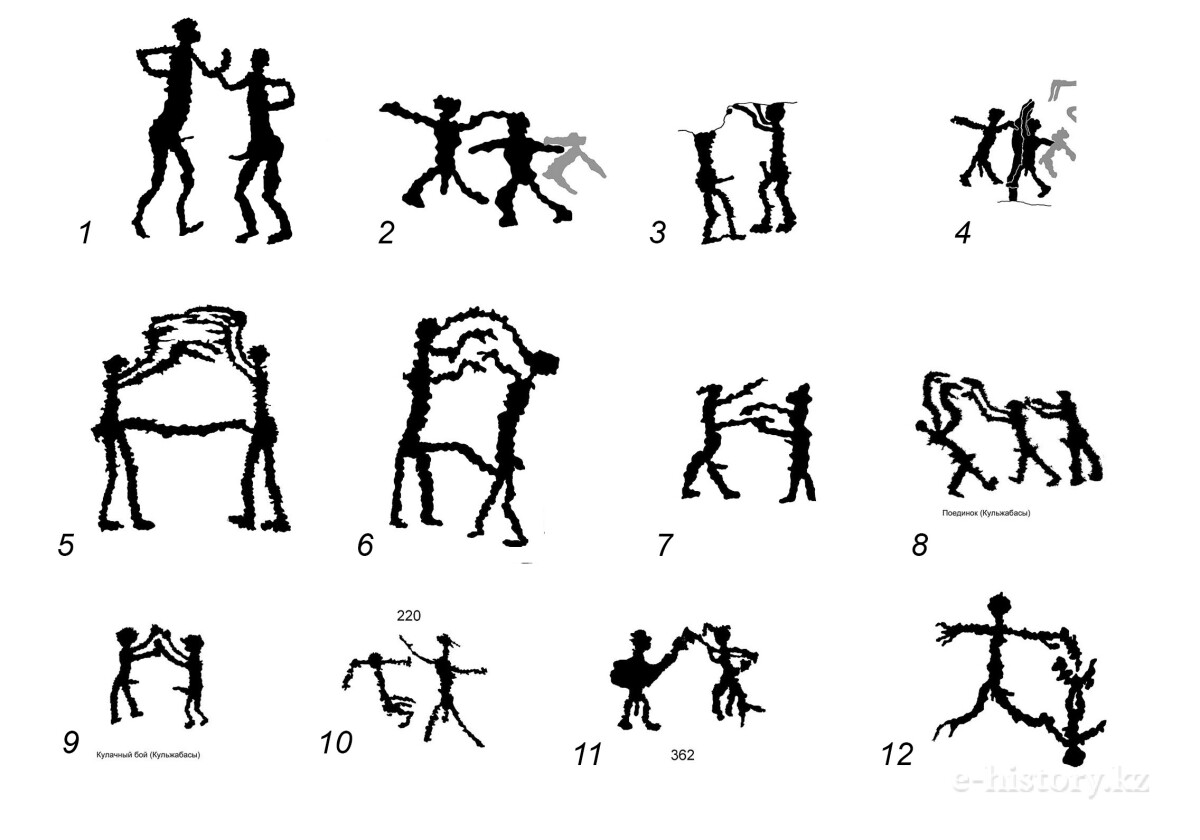
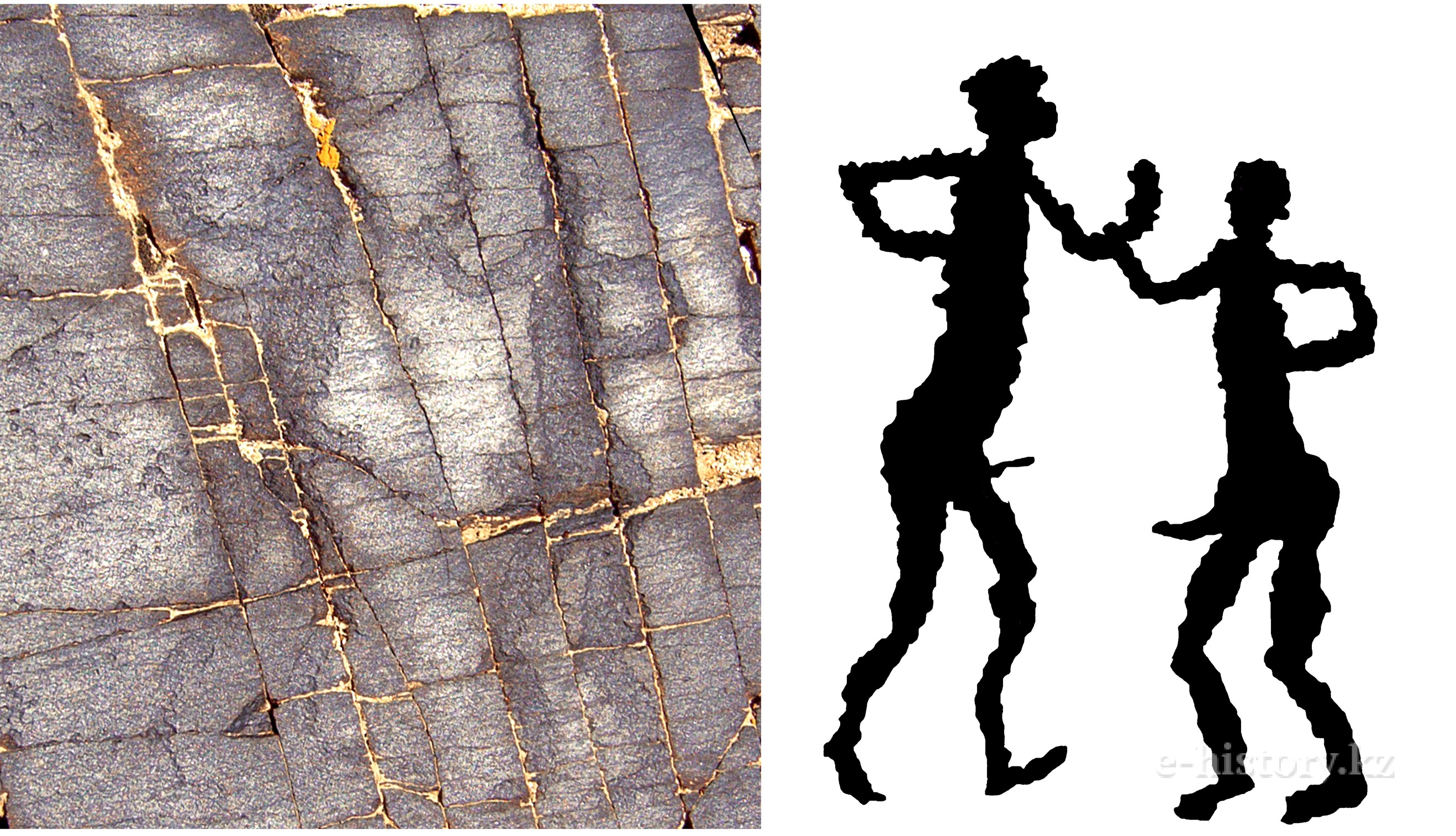
Many rock paintings in Central Kazakhstan, in the Karatau Mountains and on the territory of Zhetysu are witness about the existence of a special kind of fight in the Bronze Age (mid-2nd millennium BC).
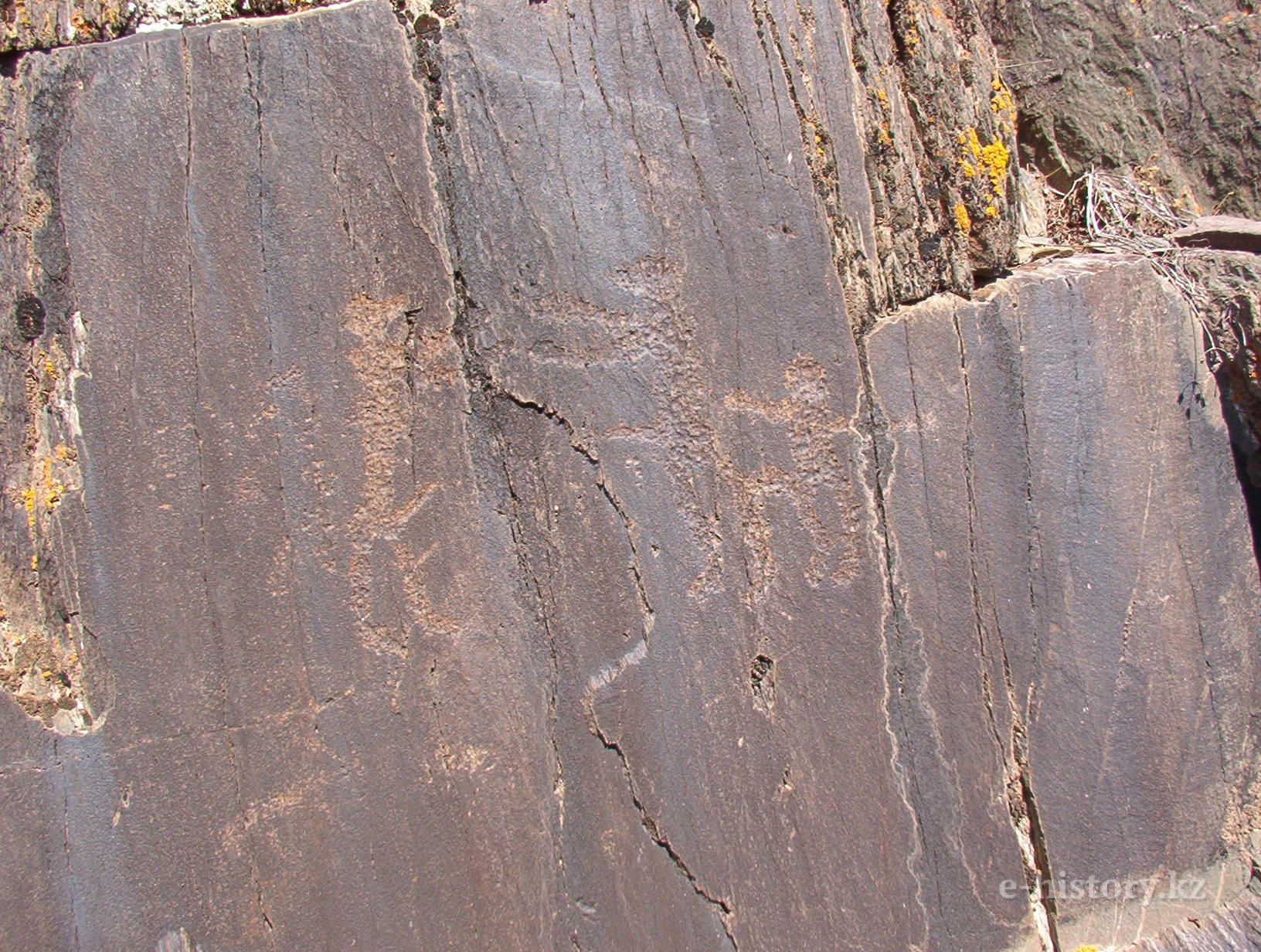
Wrestling in the rock art
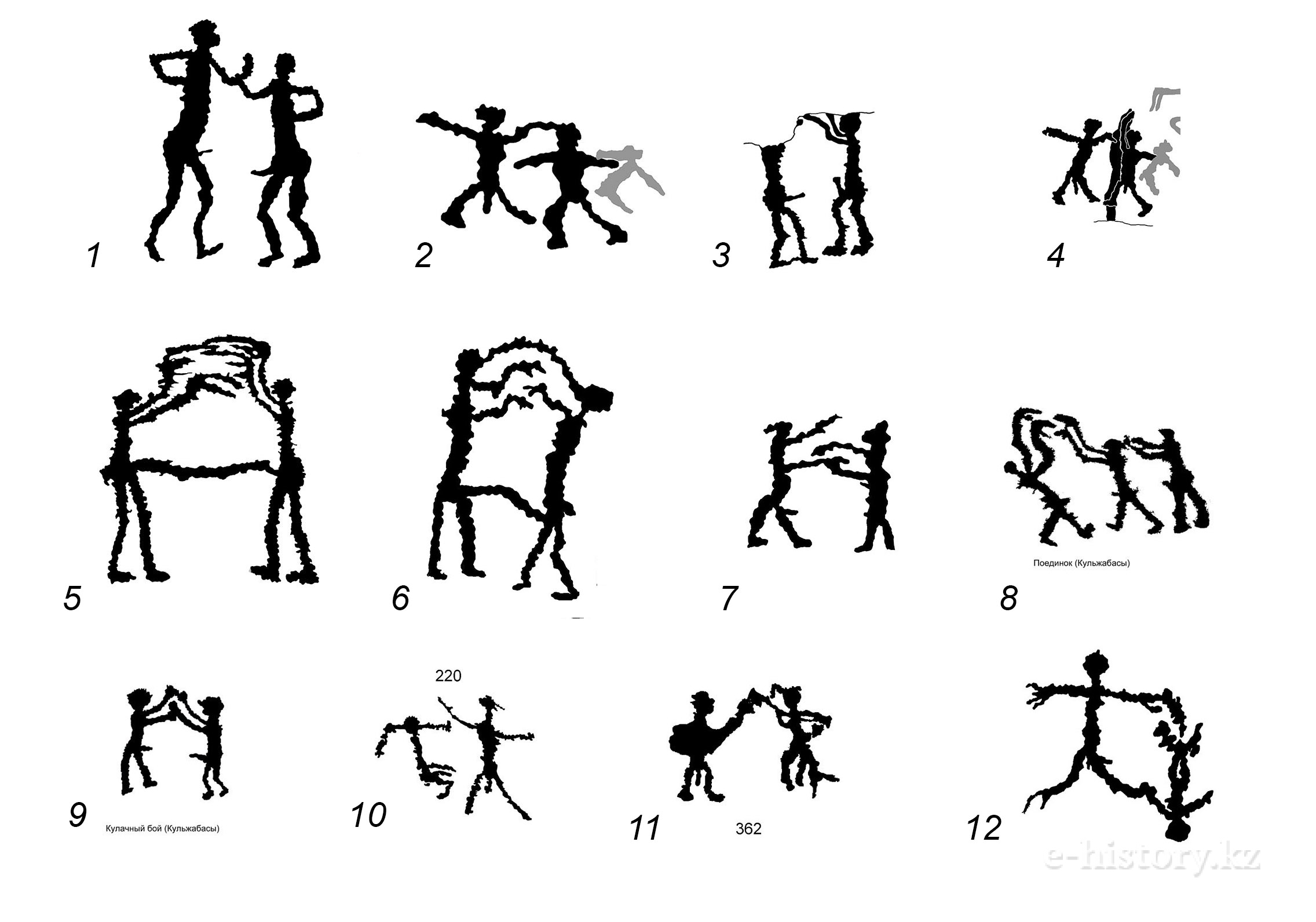
Images of wrestling in cave painting in 16th — 15th century BC
Similar images are also found in Mongolia, Kyrgyzstan and South Siberia. We have conducted long-term studies of ancient military sanctuaries and petroglyphs of Kazakhstan. We studied ethnographic materials, few written evidences of ancient authors and experience the historical reconstruction of ancient and medieval combat with weapons.
The earliest images of the fights dated 6th-12th centuries. BC, it is the period of the Bronze Age. Sometimes it is now called the «Age of war chariots». On the rocks in the ancient sacred portrayed numerous scenes of fights. There are three types of combat: the fight on the weapon, pugilism and wrestling.
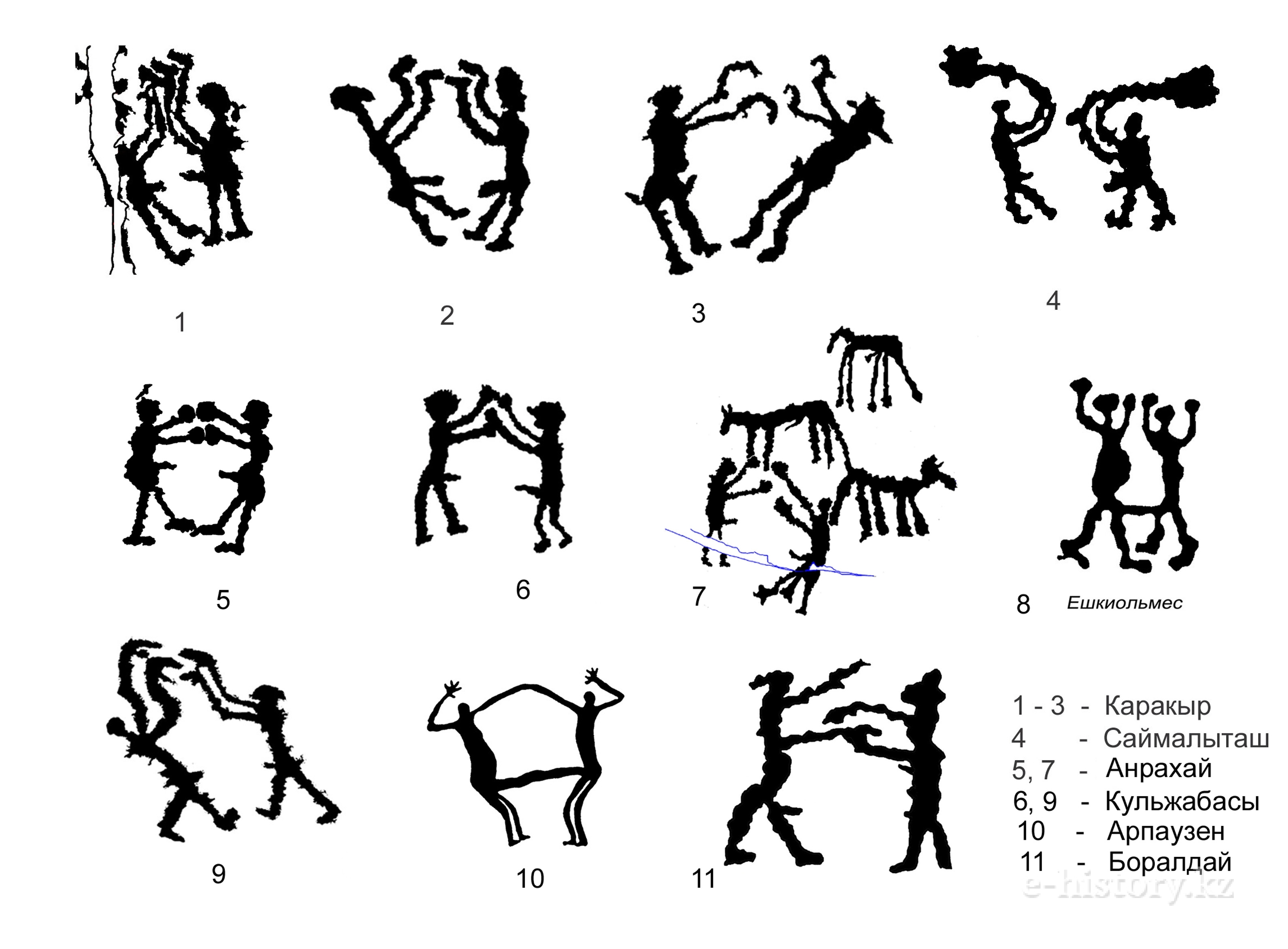
Image of fights: fight on the weapon (1–4), pugilism (5–8), wrestling (9–11)
Fight on weapons
Pugilism, where fists wrapped with special tape, is rarely seen in the sanctuaries where many images are stored on the gun fights. Next to armed fight scenes we find images of wrestlers, and this is no accident. Fighting was inextricably linked to military training.
During the Bronze Age Kazakh kuresi along with the general principles, emerge features that distinguish this ancient art from numerous national martial arts of other regions. This is largely determined by the characteristics of the steppe life and necessity of special training of the warriors on chariots.
Nearly all kinds of ancient fights have common traits for ancient culture.
Firstly, it is the restriction of the area for the fight. The area may be in the form of a square or circle. Square in this case symbolizes the mother earth and the circle — the sky father. In ancient times, the fight was always dedicated to the gods and good spirits, so that all actions of the wrestlers had to be performed on a specially purified from evil and protected from evil forces area.
In case of Kazakh kuresi, area with round shape was likely used. In ancient shrines along with the fight scene there are solar signs, representing a wheel which symbolized life cycle and was peculiar model of the world.
Secondly, it is the general rule: opponent should be put opponent on shoulder blades or push out the limit line.
Thirdly, it is equal conditions of fighters, i.e. a single gear, clothes,
etc.
Fourth, let the struggle to find out who is stronger, and provide training to real combat without causing severe damage to the opponent.
Special training of warrior on chariots and specific life conditions in the middle of the 2nd millennium BC led to the appearance of specific distinctive features of Kazakh kuresi from other martial arts.
According to the materials of studied burials and petroglyphs of the Bronze Age, there was no hereditary principle in the allocation of social status. People were born and died equal.The youths were part of the elite, i.e. become warriors or charioteers commune after initiation ceremony - initiation into the adult members of society.Already at this early stage the first feature of Kazakh kuresi is allocated. For chariot warrior required fluency of any weapon for both right and left hand. During the movement chariot warrior almost all the time with one hand had to hold on to the handrail and the other to hold the reins alternately, the weapon.
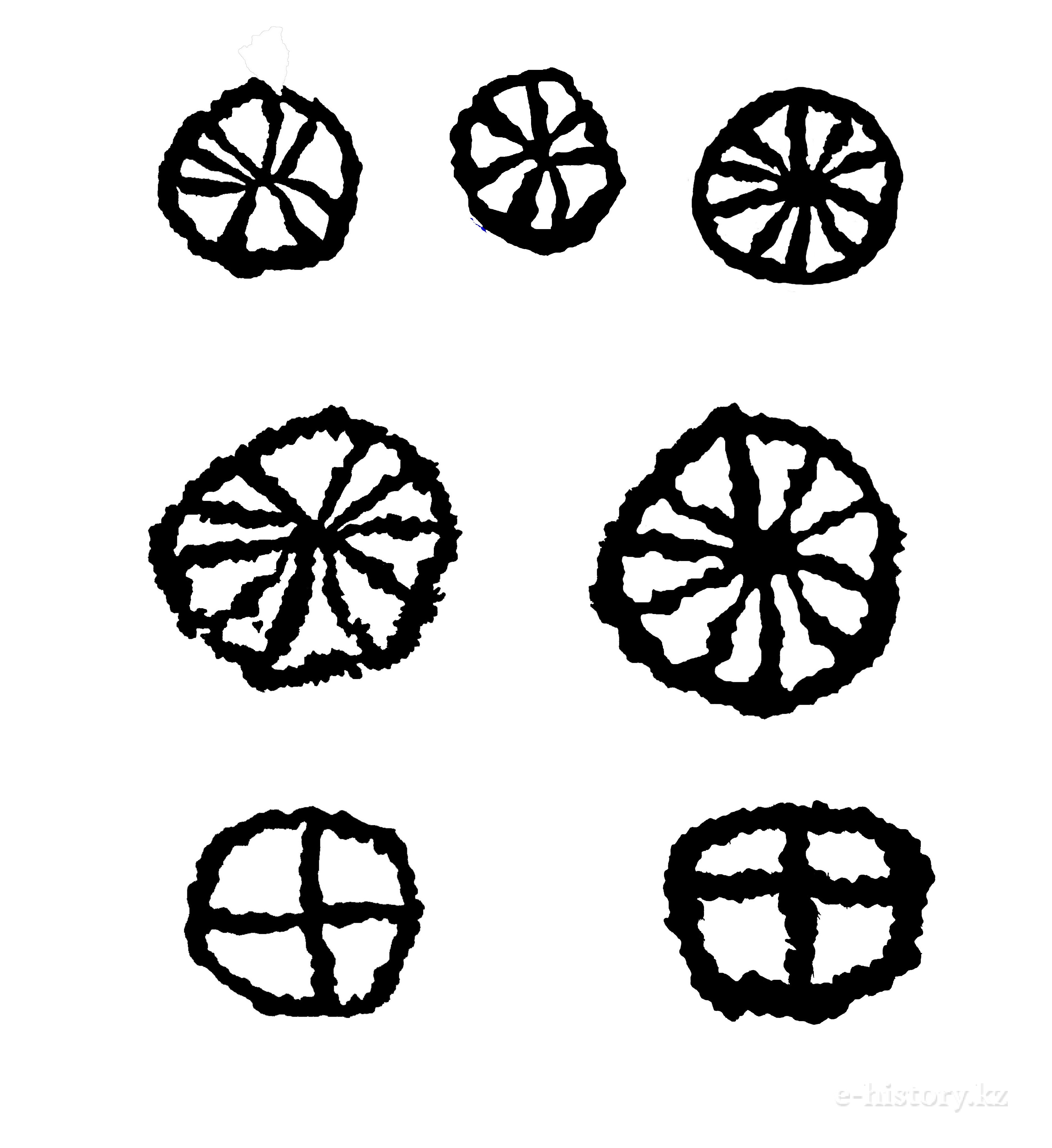
Image of the wheel, Boralday (Karatau)

Charioteer
Depending on which side appeared opponent charioteer had to fight it right, then the left hand. Hence, all the tricks, from basic combat, carefully worked out on both the right and the left front. This was important due to the fact that all the deadly duels conducted exclusively in doubles weapons, which took both hands. It could be axes, sickles special, clubs or maces. At the same doubles weapons were final matches and final ceremony of initiation.
Fight with axes during an initiation ceremony (Karakyr)
From such features appeared a rule that allows all seizures to the waist and legs can act against an opponent feet. This rule allowed soldier easily use fighting techniques in a real battle, when he had weapon in his the hands.
Exactly these two features allowed Kazak kuresi trace the development of this struggle for millennia.
Ancient authors write that Saks and Scythians were fluent in archery from right and left hand. In the middle Ages, many Turkic warriors possessed rare for other regions fencing system paired with swords and axes, as evidenced by numerous finds the pair battle axes 9th-12th centuries in Talhize (Talgar). Finally, a heavily armed warrior with a sword never used grips feet in combat as weapons using any lower jaws are meaningless.
Thanks preserved in the ancient sacred rock drawings, we can reconstruct some of the methods of preparation of fighters and warriors in ancient times. On images often seen fighters operating with one hand where other hand is at the same time behind the belt.
Bronze Age settlement
Fight allowed working and developing fighting stance required for a chariot sense of balance. One of the basic conditions for the victory as in the fight as well as in duel was the ability to properly use their weight in order to force the opponent to lose balance.
Later in the middle Ages, this skill will become even more significant in relation to the spread of heavy armor.
On the stage of allocation the military class in most peoples, single form of ancient combat is divided into elite warriors combat training professionals and national combat coming off of practical combat system. But just at this period (1st millennium BC) steppe civilization goes to a nomadic way of life. Military training becomes necessary for every man, not just a professional soldier. This determined the further development Kazakh kuresi. Unique view of the ancient struggle did not divided into separate branches, but preserved as the basis of combat training nomad.
In ancient Turkic period Kazakh kuresi had further development. Application by medieval horsemen of heavy armor put forward higher requirements for the ability to maintain balance in the battle to properly distribute forces to anticipate enemy actions. Be aware that the medieval tournaments in Europe and the Great Steppe differed significantly. In Kazakhstan there was no special tournament weapons and armor. There was no restriction in the use of weapons. In a duel of nomads used the whole range of weapons starting with a bow, arrows and ending with a knife. If the weapon could not resolve the dispute of warriors, they completed a duel with fight. Descriptions of such fights in the epics of the Kazakh people and works of medieval authors are many. This feature has helped to keep the significance of the ancient fight. Nomad knew from childhood that makes human warrior is not a weapon, but the ability to fight in any conditions.
Some training methods that had been used in Kazakh kuresi in the Middle Ages survived to the present day. Fighters captured the opponent’s arm near the elbow, where his free hand was removed at his own belt.
This seizure had to throw the opponent to the ground. A similar exercise was used in the preparation of riders. Also during this period added exercise in undercutting during the battle on heavy weapons without seizures.
It should be noted that originated many years ago Kazakh kuresi contributed to the spread of some common humanistic and moral and ethical principles, rare in medieval societies in Kazakh Khanate.
S. Potapov
Archaeologist, researcher at the Institute of Archaeology named after A. Margulan
